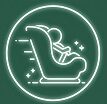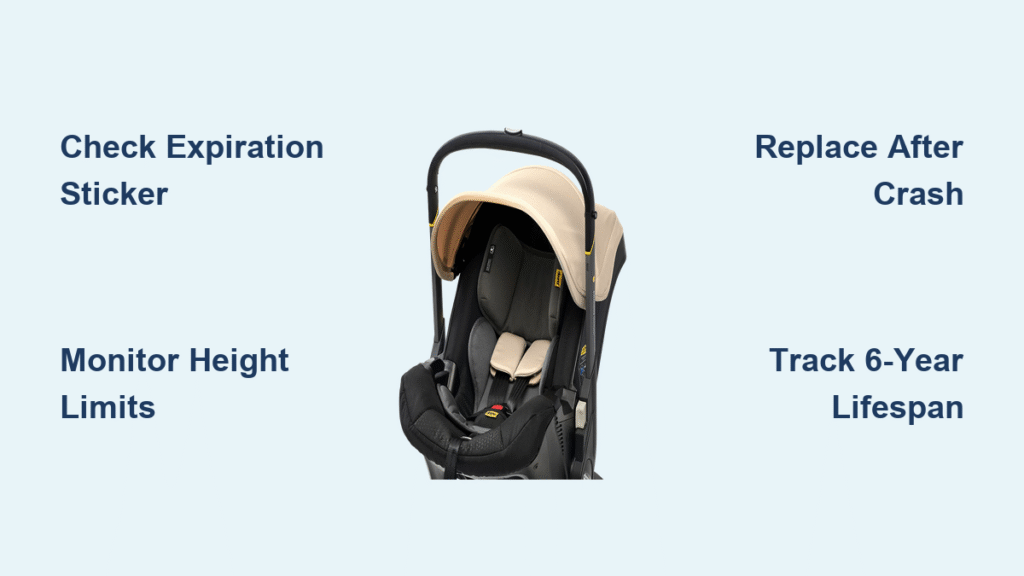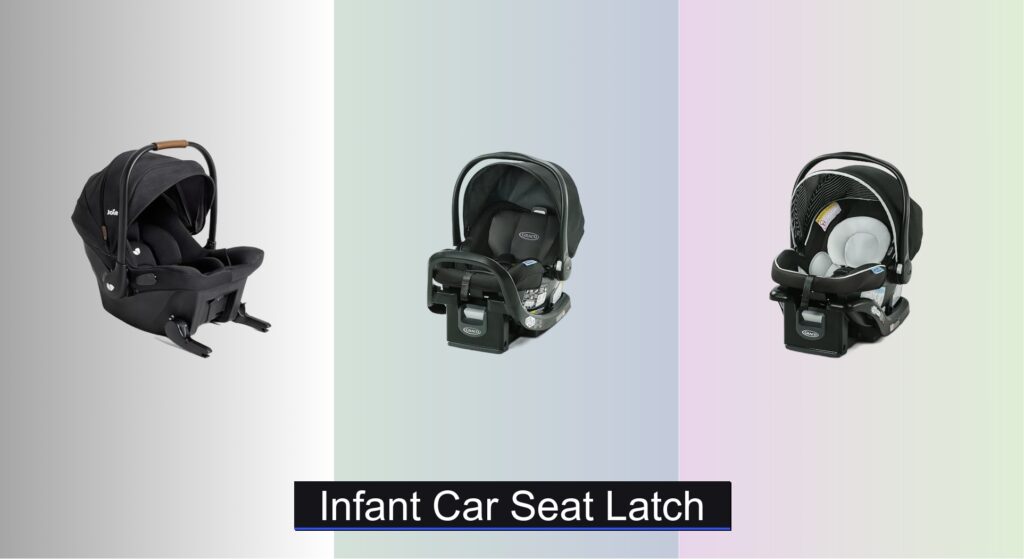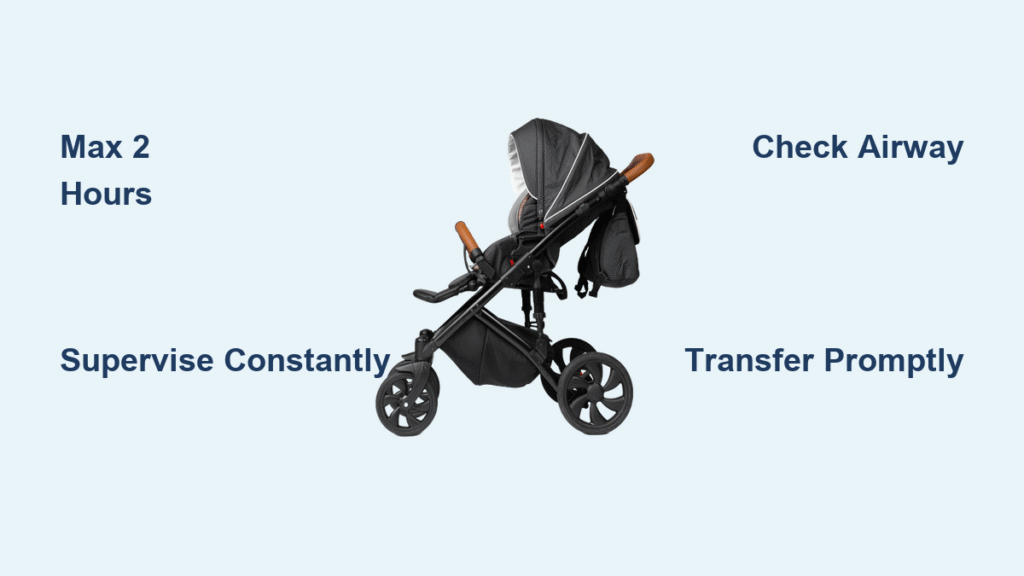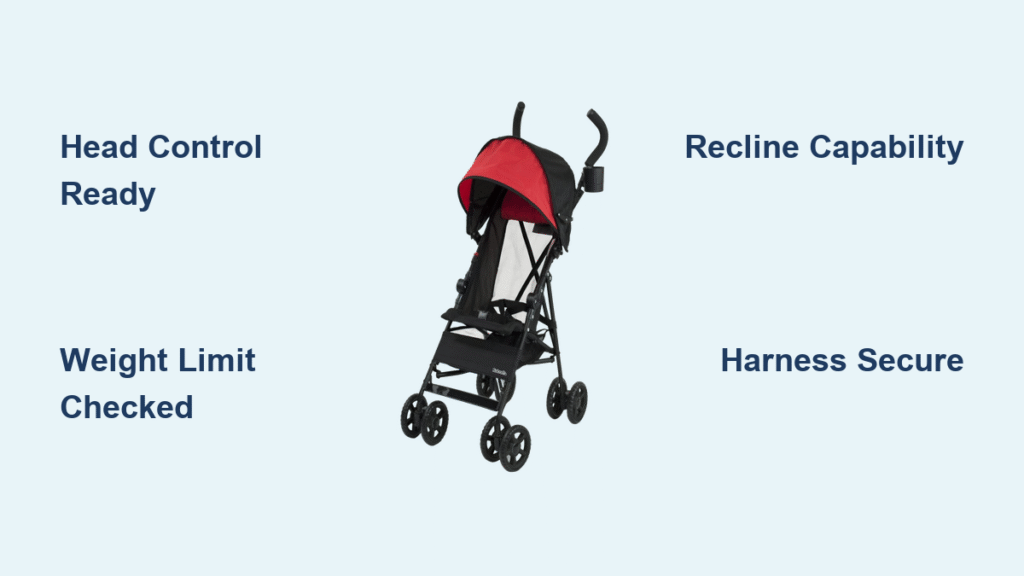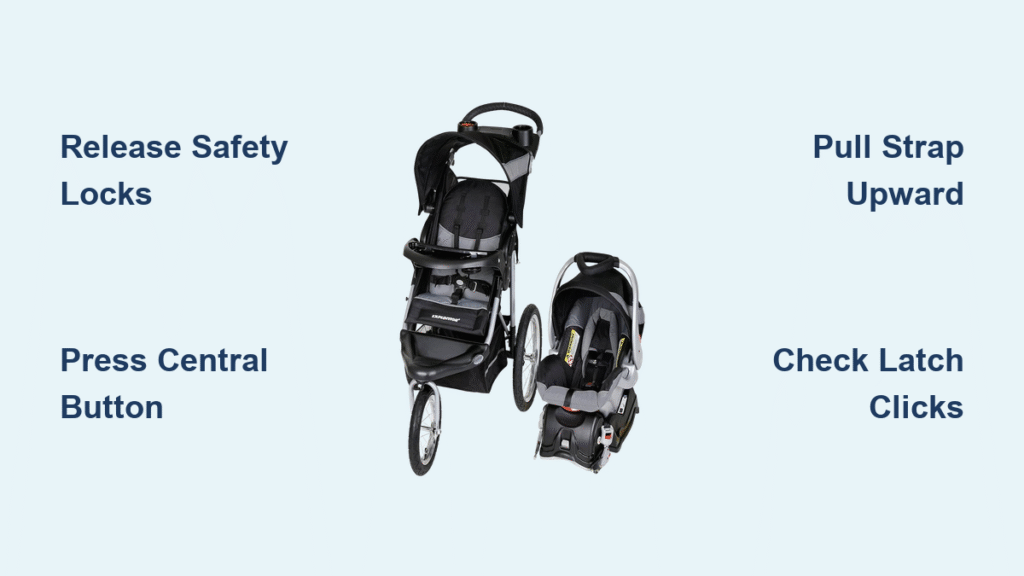That sleek Doona infant car seat transforms from stroller to vehicle protector in seconds—but its lifespan has hard expiration dates that could leave you stranded if ignored. Most parents discover too late that how long does Doona car seat last involves two separate countdowns: one tied to your baby’s growth spurts and another to an invisible plastic degradation clock. Missing either deadline risks safety and wastes money on premature replacements.
Flip your Doona upside down right now. That white sticker under the seat? It holds your six-year expiration date—calculated from manufacture, not purchase. Meanwhile, your baby’s shoulders will likely outgrow the 32-inch height limit around their first birthday, forcing an earlier transition. This guide reveals exactly when to retire your Doona, why “looks fine” isn’t enough, and how to budget for the inevitable upgrade—so you never get caught without safe transport.
Find Your Doona’s 6-Year Expiration Date (Before It’s Too Late)
Locate the Hidden Safety Sticker
Flip your Doona completely upside down and run your hand along the plastic base near the rear-facing handle. You’ll feel a small rectangular white sticker with embossed lettering. This isn’t a warranty tag—it’s your legal expiration notice showing the exact manufacture date in MM/DD/YYYY format. Do not confuse this with your purchase receipt date; a seat manufactured in January 2020 expires in January 2026 regardless of when you bought it.
Critical mistake alert: Parents often assume car seats expire 6 years from purchase. If you bought a 2-year-old Doona secondhand, you’ve already burned 24 months of its safety lifespan. Always verify the sticker date before installation.
Why Plastic Degradation Forces Retirement
Doona’s engineers set the 6-year limit because polycarbonate plastic weakens from UV exposure, temperature swings, and chemical outgassing—even when stored in garages or closets. Microscopic cracks form in energy-absorbing structures, turning your seat into a brittle shell during crashes. No visual inspection can detect this. That “like new” Doona from your sister? If it’s 7 years old, it’s as unsafe as driving without a seatbelt.
Real-World Doona Lifespan Per Child: Why 12 Months Is the Rule
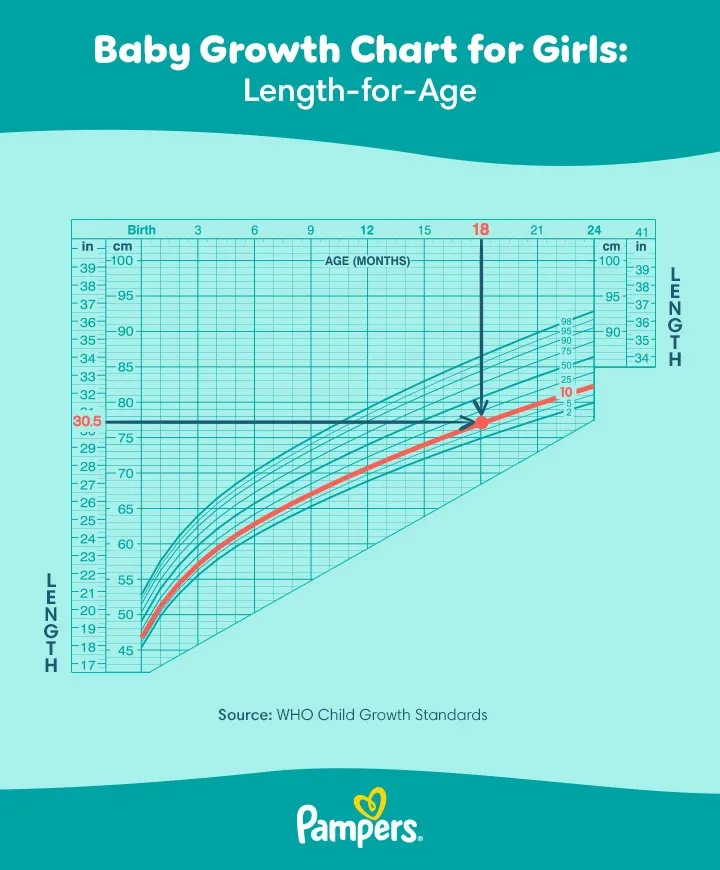
Height Outpaces Weight Every Time
While Doona’s 35-pound weight limit sounds generous (matching a typical 3-year-old), your baby will likely hit the 32-inch height ceiling first. Watch for this critical visual: when your infant’s shoulders rise above the lowest shoulder-strap slot, the seat no longer positions straps correctly for rear-facing safety. This happens between 10-14 months for 92% of babies—long before weight becomes an issue.
Growth spurt trigger: Start monthly height checks once your baby reaches 27 inches (around 6 months). If they’re in the 75th percentile for height, expect to retire the Doona by 9 months. Pediatricians flag rapid growers early—ask at your next well-visit.
The Shoulder Strap Position Test
Here’s how to check limits yourself:
1. Install Doona with baby seated normally
2. Slide fingers under shoulder straps at armpit level
3. If straps sit above shoulders: Immediate retirement required
4. If straps sit at or below shoulders: Still safe for now
Pro tip: Take monthly photos of this test. Growth accelerates silently—you’ll spot changes faster.
Height vs. Weight Limits: Which Actually Ends Doona Use?
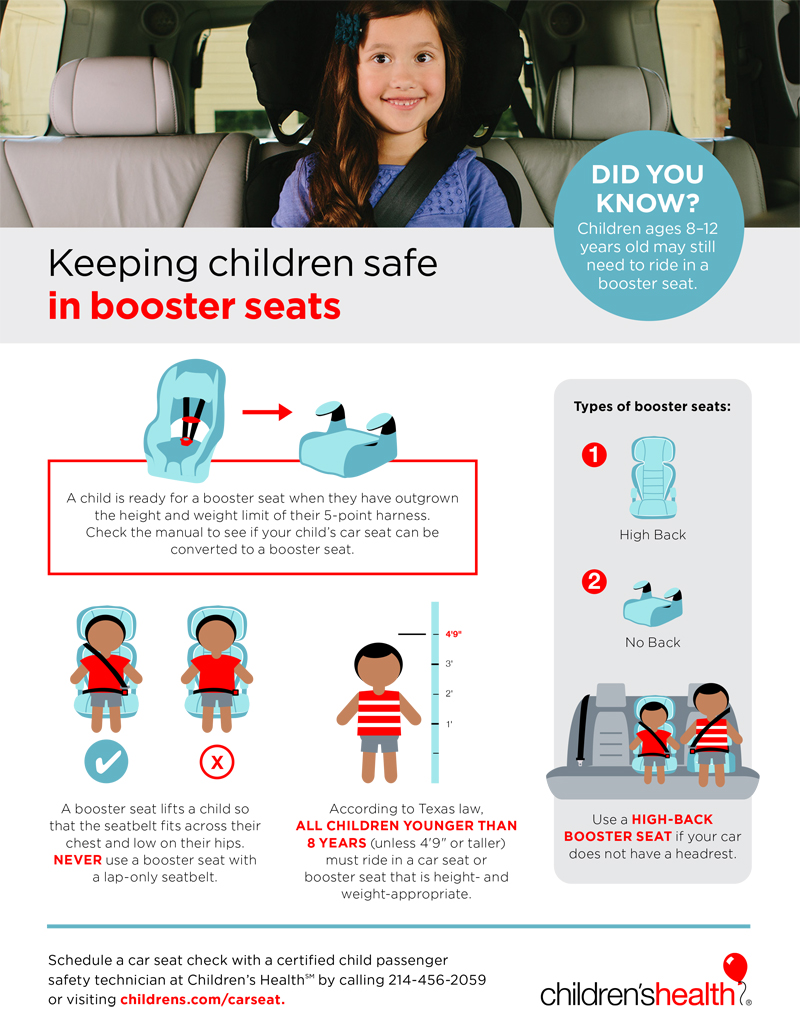
| Limit | Measurement | When Most Babies Hit It | Why It Matters |
|---|---|---|---|
| Height | 32 inches | 10-14 months | Straps can’t secure shoulders properly in rear-facing mode |
| Weight | 35 pounds | Rarely before age 3 | Less critical since height limits trigger first |
| Shoulder Position | Above lowest strap slot | Varies by growth | The true dealbreaker—overrides all other metrics |
Key insight: Never rely solely on age. A 10-month-old at 31 inches needs immediate replacement, while a petite 16-month-old might still fit. Your baby’s body—not the calendar—determines how long does Doona car seat last for them.
The Integrated Design Trap: When Car Seat Expires, So Does Stroller
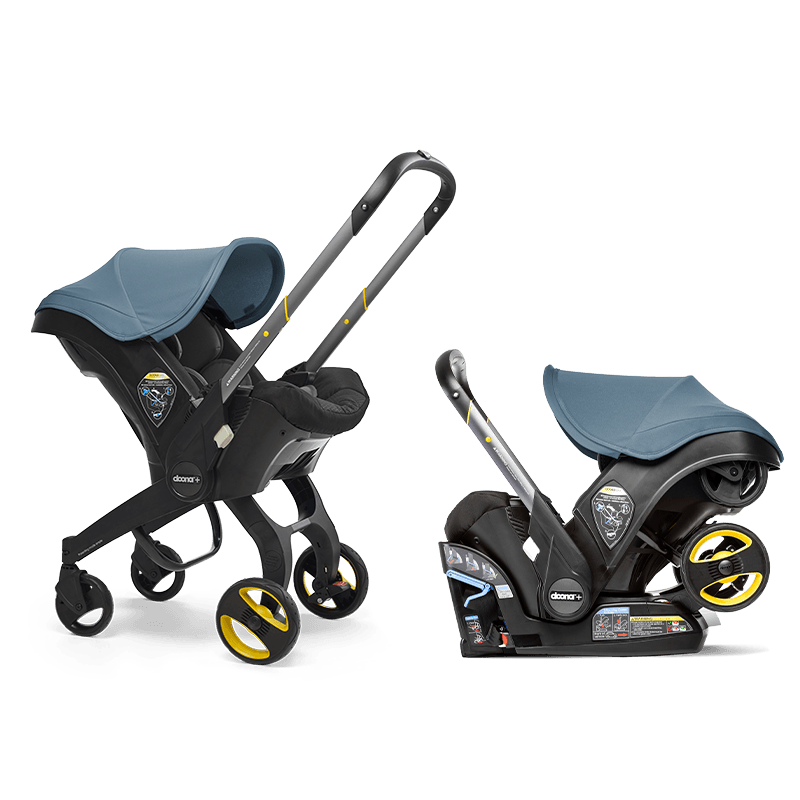
Why You Can’t Salvage the Stroller Function
Unlike modular systems, Doona’s stroller frame is permanently fused to the car seat. When your child outgrows the carrier (or hits 6 years), both functions die simultaneously. That means no repurposing the frame for older kids—a harsh reality for budget-conscious parents.
Budget shock: Parents often forget they need two replacements:
– A convertible car seat ($200-$400) for rear-facing beyond infancy
– A new stroller ($150-$500) since Doona’s stroller mode vanishes
Smart move: Sell your Doona between months 10-12 while demand is high (babies 0-12 months fit it). You’ll recoup 50-70% of value before it becomes unusable.
Crash Replacement Rule: One Accident, Immediate Retirement
Why “Just a Fender Bender” Isn’t Enough
Doona’s safety engineering assumes a single crash event. Even low-speed collisions (under 10 mph) can create hairline fractures in plastic components invisible to the naked eye. Thermal imaging studies show stress fractures radiating from impact points—turning your seat into a time bomb for future crashes.
Action step: If your vehicle airbag deployed or required repair, replace the Doona immediately. For minor bumps, contact Doona’s customer service with accident details—they’ll advise based on NHTSA guidelines.
Multi-Child Households: Sibling Hand-Down Rules That Actually Work
The 6-Year Manufacturing Window
Your Doona can safely pass to a second child only if their birth date falls within 6 years of the seat’s manufacture date. Example: A Doona made 5/15/2020 expires 5/15/2026. If Baby #2 arrives before May 2026, it’s usable; if born in June 2026, it’s expired.
High-percentile infant alert: If your first child outgrew the Doona at 9 months due to height, Baby #2 might fit longer—but still can’t exceed the 6-year plastic limit. Track both timelines separately.
Weekly Maintenance Checks That Maximize Safe Usage
Critical Frame Inspections
While weekly cleaning is obvious, most miss these structural checks:
– Hinge integrity: Press down on stroller handle while folded—any creaking or wobble indicates cracked plastic
– Locking mechanism: When unfolded, shake the frame side-to-side; movement means loose pins
– Wheel alignment: Roll on hard surface—if it veers left/right, bearings are damaged
Never skip: These checks prevent sudden stroller collapse during use. If hinges feel gritty, disassemble and wipe with dry cloth—never lubricate.
Cleaning Mistakes That Shorten Lifespan
- Cover care: Machine-wash cold on gentle cycle only with mild detergent (no bleach or fabric softener). Air dry flat—dryer heat melts flame-retardant coatings.
- Plastic cleaning: Damp microfiber cloth + water only. Never use Windex, vinegar, or disinfectant wipes—they strip UV inhibitors causing premature plastic aging.
- Harness drying: If soaked, hang harness straps vertically to dry—never twist or wring.
Pro tip: Apply 303 Aerospace Protectant to plastic parts twice yearly to slow UV degradation.
Transition Timeline: When to Start Shopping for Replacements
Month-by-Month Action Plan
- Month 6: Record manufacture date + set phone reminder for 5 years 11 months
- Month 8: Test convertible car seats (like Graco Extend2Fit) at stores with baby
- Month 10: Research stroller sales (Black Friday, Babylist registries)
- Month 11: Finalize convertible seat purchase—practice installation before Doona expires
- Month 12: List Doona for sale with clear “expires [date]” disclaimer
Urgent tip: If your baby hits 30 inches before 11 months, start shopping immediately. Popular convertible seats sell out during growth spurts.
Final reality check: Your Doona serves one child for 10-14 months max before height limits force retirement, then expires exactly 6 years from manufacture regardless of condition. Plan replacements early—babies don’t pause growth for your budget. Mark that sticker date now, track shoulder strap position monthly, and sell while it’s still useful. Your next car seat journey starts the moment you flip that Doona upside down.
